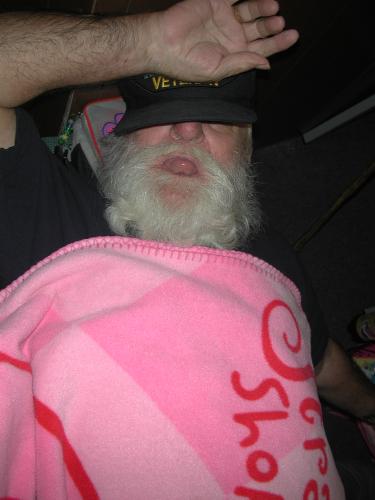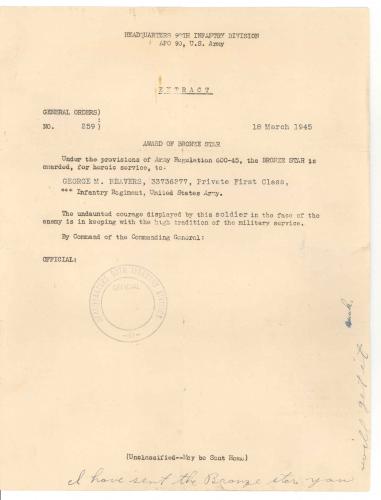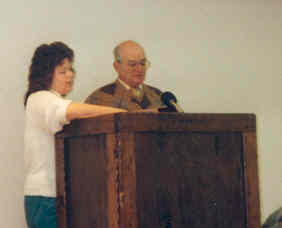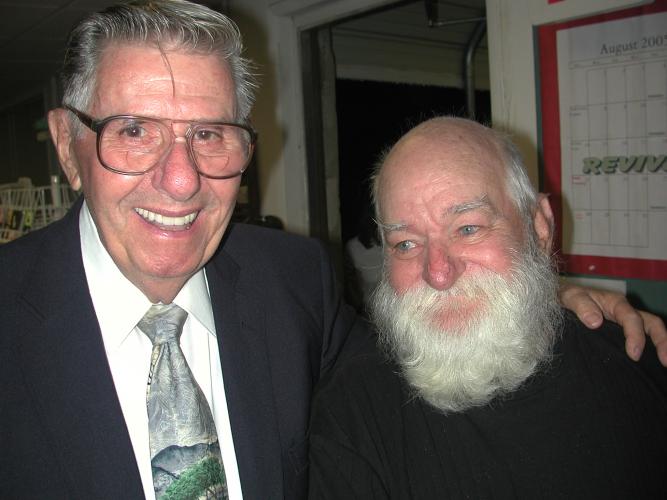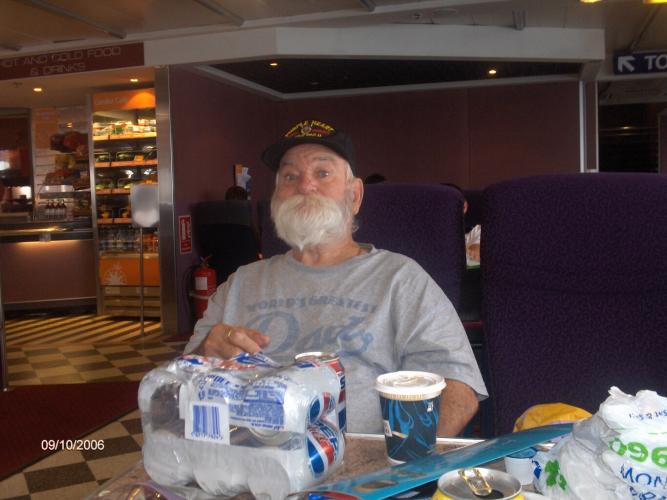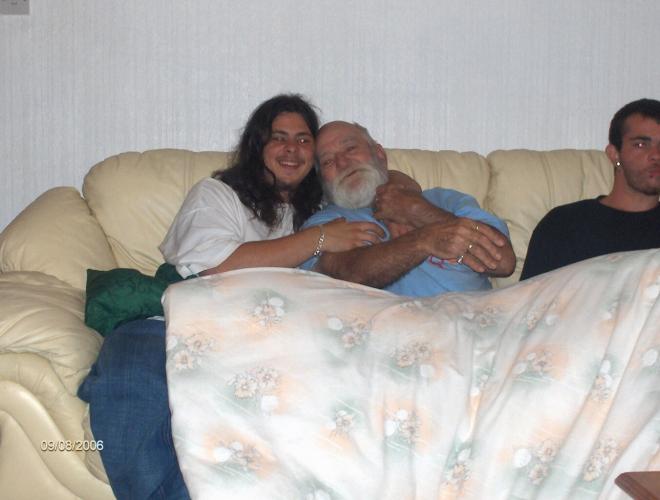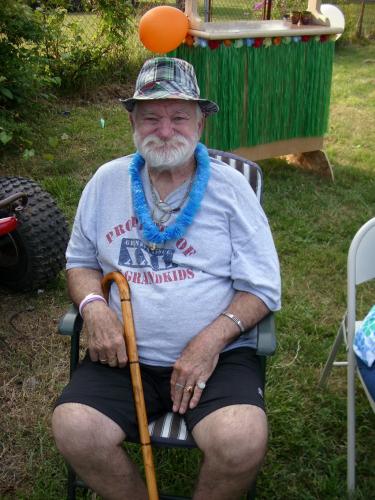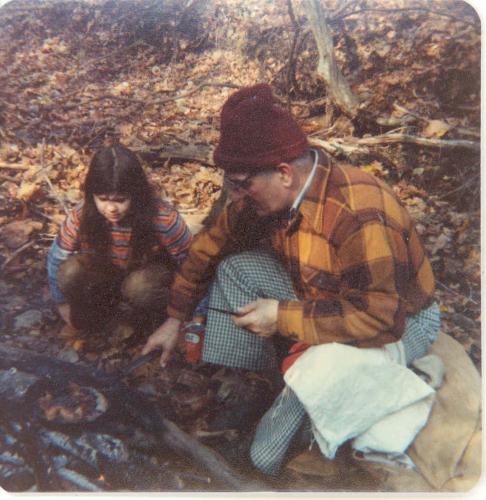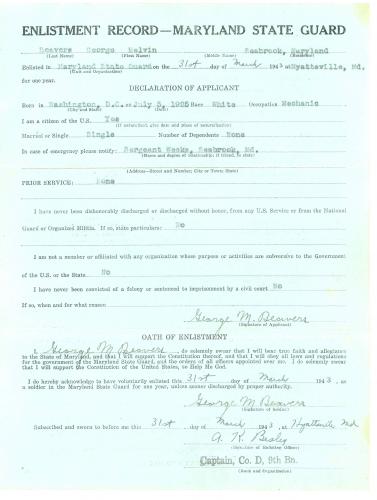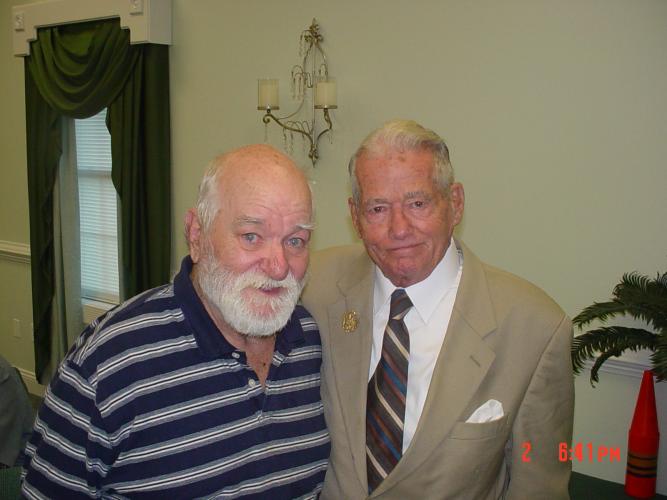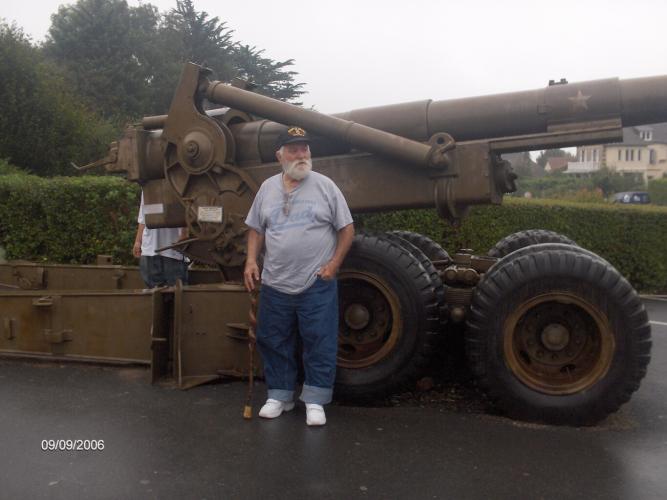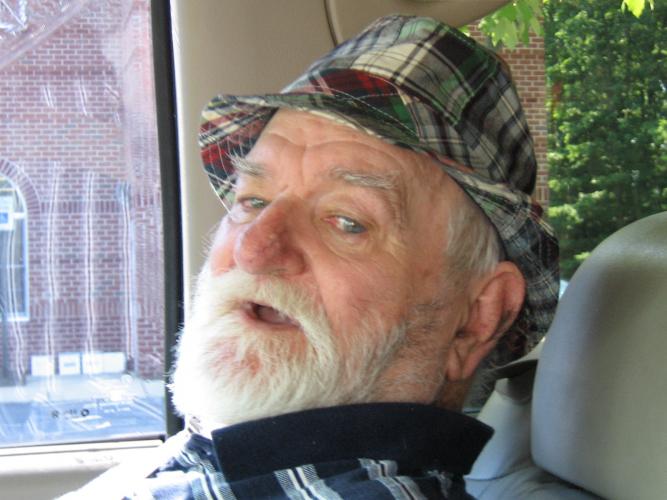God saw you were getting tired dad, and a cure was not to be.
So he put his arms around you and whispered
"Come with me."
With tearful eyes we watched you suffer dad
and saw you fade away.
although we loved you dearly,
We could not make you stay.
A golden heart stopped beating,
Hardworking hands to rest;
God broke our hearts to prove to us
He only takes the best
This memorial website was created to remember George "Buck" Beavers who was born in Maryland on July 5, 1925 and passed away on January 26, 2009. You will live forever in our memories and hearts.
You can See more stuff about Buck on the Left side bar and on the top it says George "Buck" custom pages for more stuff also. Thanks For visiting this site.
My dad George "Buck" Beavers graduated on January 26, 2009 and is now a resident of heaven.
He trusted in the Lord Jesus Christ as his personal Saviour. He believed the gospel as found in 1st Corinthians 15:1-4
1Co 15:1 Moreover, brethren, I declare unto you the gospel which I preached unto you, which also ye have received, and wherein ye stand; 1Co 15:2 By which also ye are saved, if ye keep in memory what I preached unto you, unless ye have believed in vain. 1Co 15:3 For I delivered unto you first of all that which I also received, how that Christ died for our sins according to the Scriptures; 1Co 15:4 And that he was buried, and that he rose again the third day according to the Scriptures:
He followed what the Bible says in Romans 10: 8-13
Rom 10:8 But what saith it? The word is nigh thee, even in thy mouth, and in thy heart: that is, the word of faith, which we preach; Rom 10:9 That if thou shalt confess with thy mouth the Lord Jesus, and shalt believe in thine heart that God hath raised him from the dead, thou shalt be saved. Rom 10:10 For with the heart man believeth unto righteousness; and with the mouth confession is made unto salvation. Rom 10:11 For the Scripture saith, Whosoever believeth on him shall not be ashamed. Rom 10:12 For there is no difference between the Jew and the Greek: for the same Lord over all is rich unto all that call upon him. Rom 10:13 For whosoever shall call upon the name of the Lord shall be saved.
My Dad was my hero. He was a World War 2 Veteran. Here is a little bit about my dads War experience.
He was a bonafied war hero. He fought in WW2. He was captured and sent to a camp. He was a good grandfather to my kids, and he was loved by his family. He is found in John Colby's book called "War from the Ground Up" there is a picture of him on page 393.
His outfit was the 90th Division, they where known as the "Tough Hombre's"
The 90th Division entered W.W.II combat in Normandy on D-Day and fought across Europe continuously until V-E Day.
Overview
The 90th Division entered W.W.II combat in Normandy on D-Day and fought across Europe continuously until V-E Day. During these eleven months, it served under six different division commanders; the first two swiftly proved themselves inept and were deservedly relieved; the next two were great combat leaders who were rapidly promoted to higher ranks as corps commanders; the last two were able, competent leaders who did well by the division.
In this process, the 90th achieved an impressive metamorphosis from a hesitant, casualty prone, ineffective outfit, denigrated by Gen. Bradley as a "problem division," to a battle-proven, proud division designated personally by Generals Patton and Eisenhower as among the very best.
Organization
The 90th was a standard triangular infantry division. Each of its three regiments was made up of three battalions, and each battalion had three rifle companies and one heavy weapons company. Each rifle company had three rifle platoons and one weapons platoon, and each rifle platoon was composed of three squads. A heavy weapons company fired 81mm mortars and water-cooled, .30-caliber machine guns. A rifle company's weapons platoon fired 60mm-mortars and air-cooled machine guns. A rifle squad had approximately 12 men: a squad leader (buck sergeant), an assistant squad leader (corporal), a Browning Automatic Rifle (BAR) team of two men, and eight riflemen. This infantry provided the basic combat strength of the Division, but each regiment was directly supported by an artillery battalion (105mm howitzers); another battalion of 155mm guns provided heavier reinforcing fire.
In addition to these essential infantry/artillery units, the Division included sufficient support units to fight sustained battle alone. Support units included engineer, medical, signal, ordnance, and quartermaster battalions. Aside from this basic divisional organization, other combat units were often attached - tanks, antiaircraft, tank destroyers, and additional artillery battalions as combat situations required. The Division had been well trained, by the standards of its day. It was activated on March 25, 1942, at Camp Barkeley, Texas a few miles south of Abilene. During the summer and winter of 1942, it underwent extensive basic training, its men learning close-order drill, extended order drill, hasty field fortifications, field sanitation, military courtesy, map reading, potato peeling and dish washing.
Normandy Campaign
June 6 - 8
The 1st and 3rd battalions of the 359 Regiment were attached to the US 4th Division and were part of the Utah Beachassault force on D-DAY, June 6, 1944. The 2nd battalion with the other two regiments, 357th and 358th, landed on Utah Beach on June 7 and 8. Fortunately, resistance was very light on Utah Beach. This is in contrast to bloody Omaha Beach where the US 1st Division met murderous resistance and nearly had to withdraw from the beach.
June 9
By the end of D+2 most artillery battalions and infantry battalions were ashore but it would be several days before the Division could be organized and deployed for combat. The first offensive action for the 90th, however, happened on June 9 with the 344th and 345th Field Artillery Battalions supporting an all-day attack across the Merderet causeway by the 82nd Airborne's 325th Glider Regiment at La Fiere, four miles west of St. Mere Eglise. Four miles to the South of La Fiere the 82nd Airborne's 508th Parachute Regiment fought to establish another bridgehead across the Merderet at Chef du Pont. These successful attacks removed critical choke points and allowed the 90ths' Infantry Regiments to move across the Merderet and attack westward on June 10.
June 10
The 90th's first attack took place this day with the 357th on the right and the 358th on the left. At 0400 hours, the 358th crossed the bridge at Chef du Pont, headed for Picauville, moving just south of Hill 30 and passing partially through elements of the 508th Parachute Regiment on Hill 30. Just beyond this point, the 358th was met with fierce resistance. The 357th, with the 2nd Bn. leading, started crossing the causeway at La Fiere towards Cauquigny at 0515. Both attacks found the going tough, with casualties heavy throughout the first day. Meanwhile, the 359th remained attached to the 4th Division
June 11
Both the 357th and the 358th Infantries continued their attacks with heavy casualties. The 357th on the right (north) made little progress toward Amfreville. The 358th on the left, with two battalions abreast, was more successful, moving through Picauville toward Pont l'Abbe. The 359th Infantry was released to the 90th and moved during the night from positions near Fresville south to the 90ths' sector. It was inserted in the line near Barneville between the 357th and the 358th. During the move, the 359th was severely shelled, which affected its readiness to attack the next morning.
The Normandy battle had just begun at this point and the 90th was very green. The 90th was an important part of the overall Normandy strategy: To fight across the Cotentin peninsula, seal it off while Cherbourg was seized, eliminate German resistance in the Mahlman Line, and prepare for the breakout (Operation Cobra). Although not widely publicized then or later, those six weeks of combat involved some of the most difficult, demanding and costly fight of the entire war. The battles at Beau Coudray and Mont Castre (Hill 122) ranked with the toughest. It was there that they faced and conquered, at great cost, the Mahlman Line, which was the German's main line of resistance for the peninsula.
Campaign of Northern France (The Breakout)
July 24 was spent mostly in preparing for the 90th's role in COBRA, which was scheduled to jump off on the 25th of July. In preparation for this, the 90th launched a coordinated attack on the 26th that instantly ran into heavy resistance on the Seves river, including extensive mine fields that made rapid advance south through the Seves "Island" area hazardous. During the night of the 26-27th, the enemy in front of the 90th pulled out, enabling the Division to move farther south to liberate Periers on the 27th and then St. Sauver Lendelin the same day. On the 28th, the 4th Armored Division passed through the 90th while the 6th Armored passed through the 83rd Division (to the left). The 90th continued to push some elements southward; however, late in the day both the 90th and the 83rd were directed to stand fast so the 8th and 79th Divisions could pass through and follow close behind the 4th and 6th Armored Divisions in order to exploit the breakthrough towards Avranches and beyond. It was during this brief halt for rest and reorganization that Gen. Landrum was relieved and replaced by Brig. Gen. Ray McLain. One day later, the 29ths', Brig. Gen. "Wild Bill" Weaver, came over to the 90th as the new Assistant Division Commander. On the 1st of August, the Division again got under way, this time by motor, and moved south through Coutance and Avranches with the mission of setting up blocking positions east of Avranches between the See and Selune rivers; to protect the dams on the Selune river; and to capture Louvigne and make contact with the 79th Division on the 90th's right.
On the 5th of August, the 90th was ordered to seize and secure crossings over the Mayan river, between Mayenne and Leval some 30 miles distant. To accomplish this, task force Weaver was formed. The 90th was finally gaining resounding success in battle. The opportunity was rapidly forthcoming, for they were to play a key part in devastating the German Seventh Army in the Falaise Pocket. It was the 90th's 359th Regiment that fought north and closed the Falaise Pocket by meeting the Polish forces that were fighting its' way south.
Battle of the Falaise Pocket
Hitler's order directing von Kluge's Seventh Army to attack Mortain and cut off the twelve American divisions that had passed through that area not only failed, it led the to the Seventh Army's virtual destruction in the Falaise-Argentan region. The Seventh was partly encircled by the American First and Third Armies, While British and Canadian forces slugged their way south in an effort to close the trap. Von Kluge, realizing his predicament, on August 21st ordered his divisions to make their way out of the trap as best they could. He then committed suicide. The major route of retreat was a road running southeast from Falaise through Chambois, twenty-five kilometers away. The road ran through a valley on both sides of which high ground provided excellent observation of any actions and movements the enemy made. In a period of four days, the 90th had taken more than 13,000 prisoners, killed or wounded an estimated 8,000, but itself suffered less than 600 casualties. More than 300 enemy tanks, 250 self-propelled guns, 164 artillery pieces, 3,270 vehicles, and a variety of other types of equipment and weapons were destroyed.
Pursuit Across France
After a few days of rest near Chamobis, the 90th was reassigned to XX Corps and the Third Army. The American Seventh Army and the French First Army landed at Marseilles in southern France on Aug. 25th, so the enemy was either surrounded or overwhelmed at every turn. The Germans were in a state of confusion.
XX Corps' mission was to proceed to Fontainbleau, 176 miles to the east, and to cross and secure the Seine river at that point. The mission was completed on Aug. 26th, and the Corps was assigned a new objective, the famous city of Reims. On that day, the 90th began to move. The 7th Armored Division spearheaded the attack towards Reims, with the 90th on its left and the 5th on its right. The 357th Infantry was chosen to lead the Division. The drive carried it through famous battlefields of W.W.I - the Marne, Chateau Thierry, and the Aisne - to Reims. Verdun and the river Muese fell to other units of the XX Corps.
On the 28th, the 357th crossed the Marne river at Chateau Thierry. Although the bridge across the river had been placed under artillery fire by the retreating Germans, French Forces of the Interior (FFI) had remained at their post around the bridge and prevented the enemy from destroying it. After completing its initial mission of seizing and securing crossings of two more rivers, the La Vesle and the Aisne, the Regiment moved through Reims on Sept. 1, covering the last 23 miles on foot. The 90th was in the Reims area until Sept. 6. The pursuit across France was over. The next task was to close up to the Moselle river and attack the Maginot Line.
Moselle-Saar Campaign
Continuing eastward against ever-increasing German resistance, this campaign involved several of the 90ths' most important and difficult battles. The greatest obstacles in their path were the Moselle and Saar rivers, backed by the Maginot and Siegfried Lines. Their successful surprise crossing of the Moselle near Thionville, at a point where the river was to expand in width from less than 300 feet to over a mile because of flooding, was perhaps the most renowned of all their operations. This was followed by the epic fight to seize Ft. Koenigsmacher, breaking the ring of defenses around Metz, and leading to the first capture of Metz in modern history. Then on to battles at the Siegfried Line, which involved a most difficult crossing of the Saar - without bridges. Further progress against the Siegfried was abruptly interrupted by the German attack in the Ardennes, the Battle of the Buldge.
Ardennes Campaign
The early success of Hitler's massive assault in the Ardennes caused a severe disruption in the Allied battle plans. Gen. Patton ceased attacks to the east and redirected the 90th's effort northward to cut off the base of the German salient. The 90th secretly withdrew across the Saar, trucked north over 70 miles of road iced like skating rinks, and then immediately engaged the Germans in bitter, brutal fighting. All of this was complicated by weather so severe that the infantry's losses from frostbite exceeded losses from wounds. Here the 90th experienced some of their toughest times, both in the form of opposition and weather, but they overcame them. After the German salient was eliminated, they resumed their drive to the east.
Rhineland Campaign
After the Bulge was reduced, the 90th regrouped for a few days and again turned east. having lost the bulk of their best troops in the Ardennes, the Germans' principal defensive troops now were Volksgrenadiers (folk-soldiers), but they made professional use of their defensive assets - the Siegfried Line, bad weather, and the Moselle, Kyll, and Prum rivers. The 90ths' veteran infantry overcame the pillboxes by valor and expert tactics (night infiltration, direct fire by 155mm SP guns, satchel charges, and massive artillery concentrations). Progress was spotty - sometimes slow,
sometimes rapid, but they cleared the Siegfried and crossed the three rivers to attain final destination, the Rhine.
Central Europe Campaign
The long-anticipated Rhine crossing was no problem at all as the 90th followed the 5th Division over its bridge, proceeded east to capture Darmstadt and cross the Main at Hanau, and then rolled up light German resistance toward Czechoslovakia. The 90th still encountered small groups of fanatical, vicious, unprincipled SS troops, but overcame them with light but regrettable US losses. Three memorable actions during this period did not involve combat: seizure of the German national treasure in the Merkers salt mine, acceptance of the surrender of the entire 11th Panzer Division at Hof, Germany, and liberation of the infamous Flossenburg concentration camp. These were fitting preludes to the unconditional surrender of the German armed forces at 0001 hours 9 May '45 (V-E Day has since been recognized as 8 May).
Casualties
Medical units supporting the 90th showed the total number of battle wounds was 15,076. Total killed, wounded, and missing in action came to 21,371. In addition, there were 976 non-battle injuries and 9,936 treated for miscellaneous diseases and injuries. Adding, we get 32,283 casualties of all kinds. Previous combat taught us that
casualties are lumped primarily in the rifle platoons. For here are concentrated the handful of troops who must advance under enemy fire. It is upon them that the burden
of war falls with greater risk and with less likelihood of survival than in any other of the combat arms. An infantry division of W.W.II consisted of 81 rifle platoons, each with a combat strength of approximately 40 men. Altogether those 81 assault units comprised but 3,250 men in a division of 14,000. In an army of 350,000, fewer than one out of seven soldiers stood in the front line. In Theater, the proportion was one man with a rifle for each 15 men behind him. Some rifle platoons lost over 200 percent during the course of the war. That is, because of the replacement system, more than 80 men may have passed through a platoon's ranks during the eleven months of ground combat in the ETO.
The Unit Citation That Wasn't
Very shortly after the war, Gen. Patton was authorized to recommend to Theater 10% of Third Army for Presidential Unit Citation. His response recommended two divisions, the 5th Infantry and the 90th, and some separate units. This was returned by Theater because the total came to more than 10%. He then sent a shortened list which included one full regiment plus some smaller units of the 5th but repeated his recommendation that the full 90th be so recognized! Further research revealed the 90th was the only division recommended by Patton for this award. The 101st Airborne received it after the Bastogne operation but that was at War Department initiative, not Patton's.
